Chapter Contents
Previous
Next
|
Chapter Contents |
Previous |
Next |
| The LIFEREG Procedure |
The chosen baseline functions define the meaning
of the intercept, scale, and shape parameters.
Only the gamma distribution has a free shape
parameter in the following parameterizations.
Notice that some of the distributions do not have
mean zero and that ![]() is not, in general, the
standard deviation of the baseline distribution.
is not, in general, the
standard deviation of the baseline distribution.
Additionally, it is worth mentioning that, for the Weibull distribution, the accelerated failure time model is also a proportional-hazards model. However, the parameterization for the covariates differs by a multiple of the scale parameter from the parameterization commonly used for the proportional hazards model.
The distributions supported in the LIFEREG procedure follow.
![]() = Intercept and
= Intercept and ![]() = Scale in the output.
= Scale in the output.
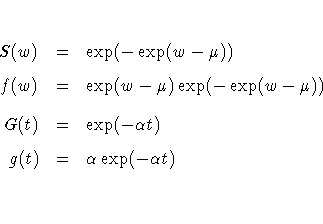
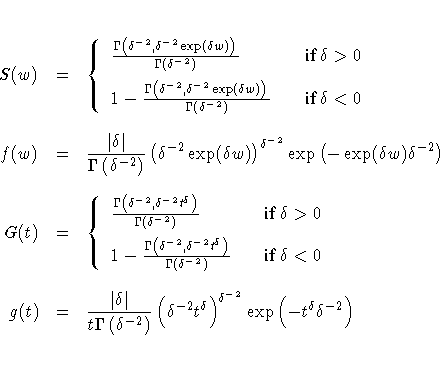
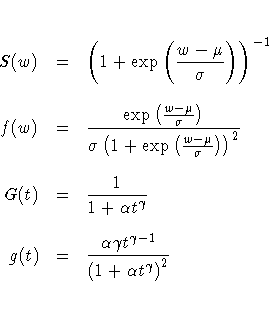
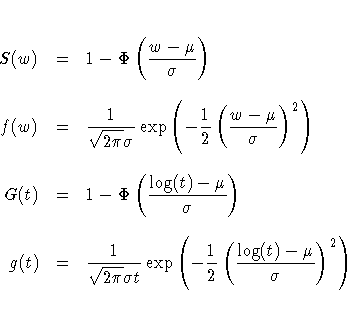
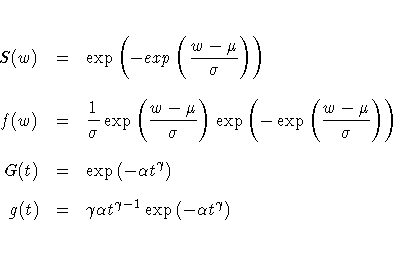
If your parameterization is different from the ones shown here, you can still use the procedure to fit your model. For example, a common parameterization for the Weibull distribution is
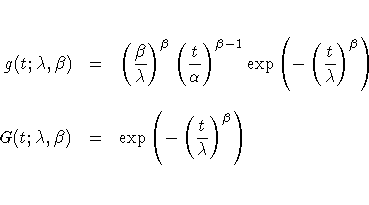
Again note that the expected value of the baseline
log response is, in general, not zero and that
the distributions are not symmetric in all cases.
Thus, for a given set of covariates, x, the expected
value of the log response is not always ![]() .
.
Some relations among the distributions are as follows:
|
Chapter Contents |
Previous |
Next |
Top |
Copyright © 1999 by SAS Institute Inc., Cary, NC, USA. All rights reserved.